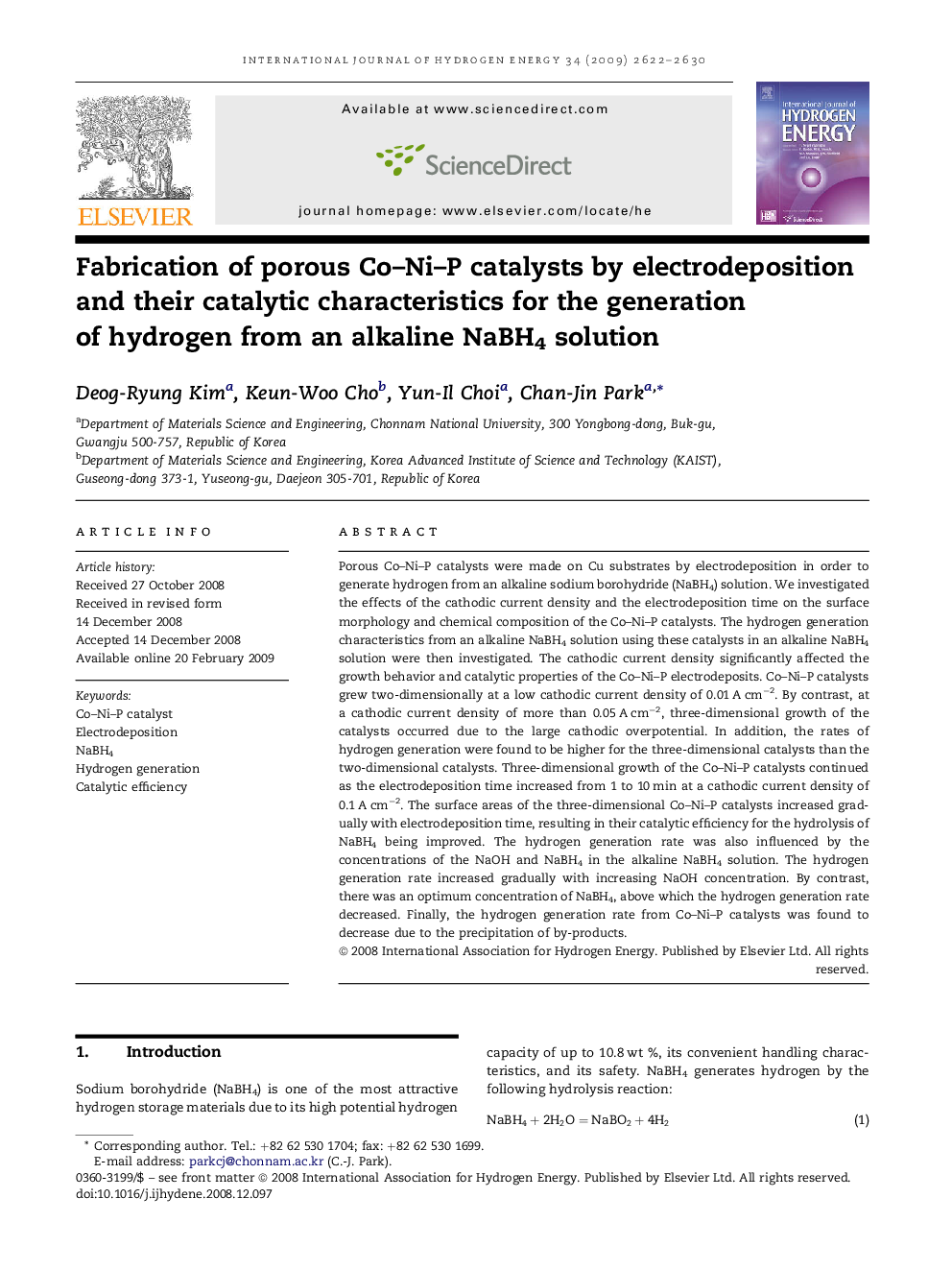| کد مقاله | کد نشریه | سال انتشار | مقاله انگلیسی | نسخه تمام متن |
|---|---|---|---|---|
| 1281193 | 1497636 | 2009 | 9 صفحه PDF | دانلود رایگان |

Porous Co–Ni–P catalysts were made on Cu substrates by electrodeposition in order to generate hydrogen from an alkaline sodium borohydride (NaBH4) solution. We investigated the effects of the cathodic current density and the electrodeposition time on the surface morphology and chemical composition of the Co–Ni–P catalysts. The hydrogen generation characteristics from an alkaline NaBH4 solution using these catalysts in an alkaline NaBH4 solution were then investigated. The cathodic current density significantly affected the growth behavior and catalytic properties of the Co–Ni–P electrodeposits. Co–Ni–P catalysts grew two-dimensionally at a low cathodic current density of 0.01 A cm−2. By contrast, at a cathodic current density of more than 0.05 A cm−2, three-dimensional growth of the catalysts occurred due to the large cathodic overpotential. In addition, the rates of hydrogen generation were found to be higher for the three-dimensional catalysts than the two-dimensional catalysts. Three-dimensional growth of the Co–Ni–P catalysts continued as the electrodeposition time increased from 1 to 10 min at a cathodic current density of 0.1 A cm−2. The surface areas of the three-dimensional Co–Ni–P catalysts increased gradually with electrodeposition time, resulting in their catalytic efficiency for the hydrolysis of NaBH4 being improved. The hydrogen generation rate was also influenced by the concentrations of the NaOH and NaBH4 in the alkaline NaBH4 solution. The hydrogen generation rate increased gradually with increasing NaOH concentration. By contrast, there was an optimum concentration of NaBH4, above which the hydrogen generation rate decreased. Finally, the hydrogen generation rate from Co–Ni–P catalysts was found to decrease due to the precipitation of by-products.
Journal: International Journal of Hydrogen Energy - Volume 34, Issue 6, March 2009, Pages 2622–2630